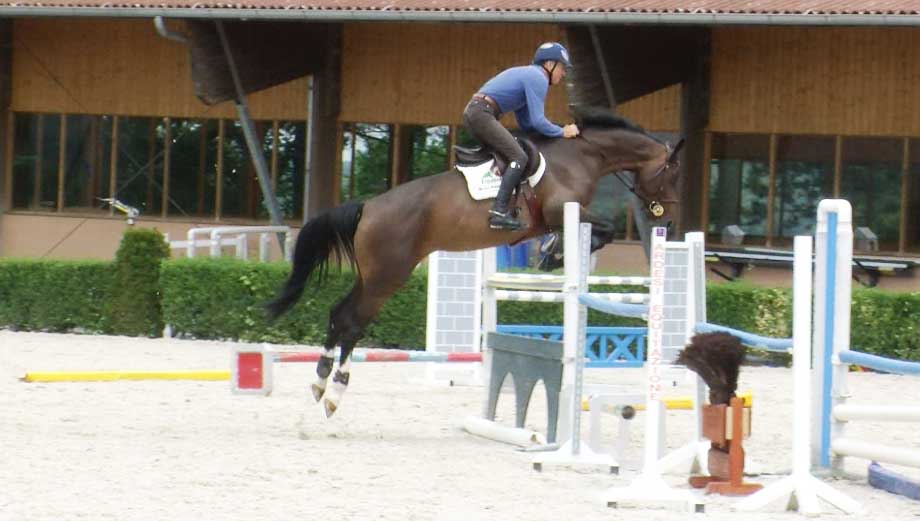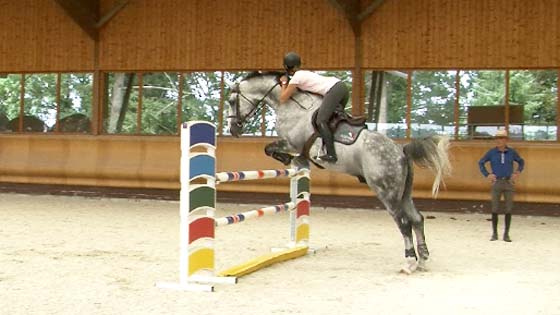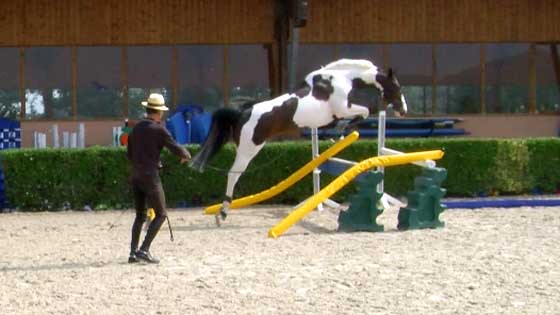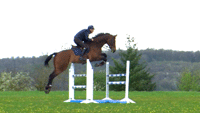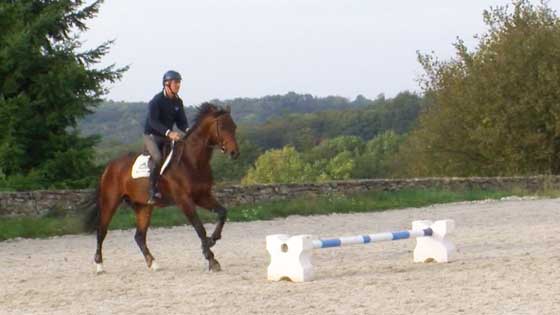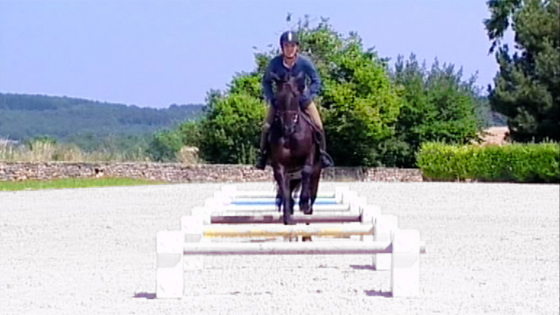Free-jumping with Catapulte
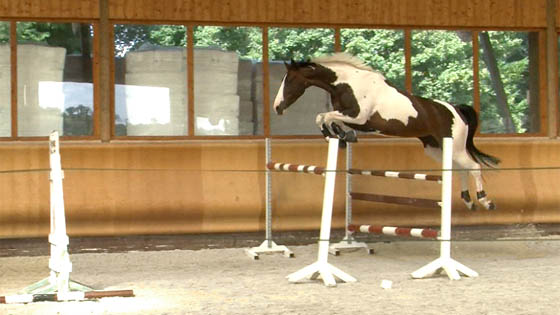
The mare has difficulties to jump a double or triple combination with a vertical placed coming in. The goal is to let Catapulte find the solution on her own without the influence of Michel.
For Michel Robert, free lunging allows the horse, without the rider’s influence, to move more naturally. Being able to watch the horse from the ground, moving alone without our influence, enables us to confront the reality. This kind of work is really interesting even for the advanced horses, as it is the case in this free-jumping session with Catapulte.
The mare has difficulties to jump a double or triple combination with a vertical placed coming in. The goal is to let Catapulte find the solution on her own without the influence of Michel.
The session starts with a warm-up on the flat where Michel lets Catapulte move as free as possible. Then, the work session consists of going over several lines of fences that Michel will adjust according to the mare’s reactions.
To start with, Catapulte has a tendency to rush to the rails. As the session progresses, we can notice that Catapulte wonders about it and tries different solutions to feel comfortable jumping these fences. Michel lets her express herself as free as possible. At the end of the session, we can notice that Catapulte made good progress in terms of the quality of her jumps as she manages better her balance and her approaches.

